ST MALO, GATEWAY TO BRITTANY
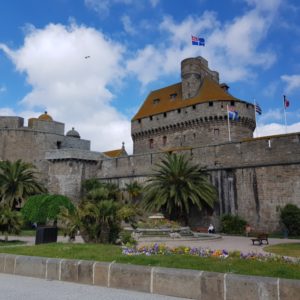
The approach to the historic walled city of St Malo, on the coast of Brittany, is surely one of the most dramatic of any city in France. The charming old town stands on a granite islet joined to the mainland by an ancient causeway. It’s enclosed by high ramparts which are bordered by beautiful sandy beaches at the foot of its steep walls.
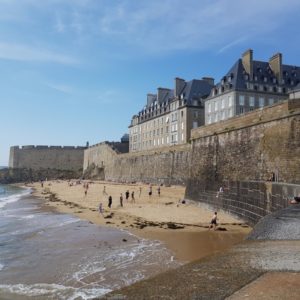
Known in the Roman period as Reginca, by the early sixth century there was a monastic settlement founded by St Brendan the Navigator, who named the island Saint Malo, after one of his Welsh followers. However, the island was not substantially inhabited until the 8th century, when the local population sought refuge there from the Normans.
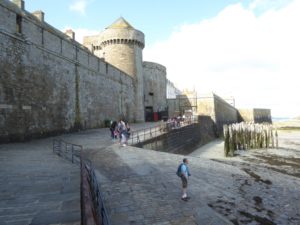
A fortress was built between the 14th and 17th centuries, which has four great round towers. One of these houses a museum largely devoted to the famous mariners born in the town, but also telling the story of the navigators, traders and privateers who brought considerable prosperity to the town. The museum is also home to about 8,000 artefacts ranging from underwater archaeological finds, tapestries, and life in the St Malo region such as fishing, shipbuilding and maritime trade.
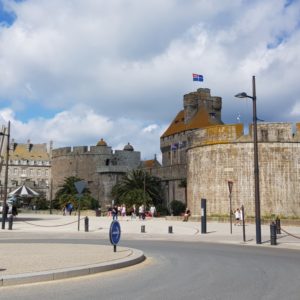
St Malo became the home of the corsairs, French privateers (in reality, government-sanctioned pirates!), who forced passing English ships to pay tribute. St Malo and St Servan, a little further along the coast, were notorious breeding grounds for pirates, whose speciality was local extortion as well as overseas raiding adventures.
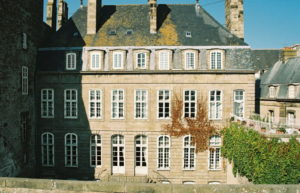
The 18th century Demeure de Corsaire—the Privateer’s House—was the residence of Francois-Auguste Magon, a director of the French East India Company. A guided tour shows the stately salons, elegant rooms and hidden staircases of this imposing residence. The cellars under the house once held prisoners during the Revolution.
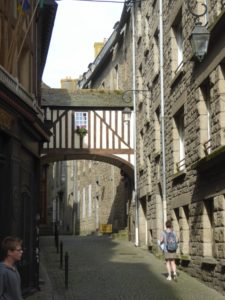
Intra-Muros (“inside the walls”), the ancient town, was badly damaged in a fire in 1661, and aerial bombing during WW2 destroyed many buildings within the walls. The historic structures have been rebuilt, and strolling the circuit of the medieval ramparts, looking down on the busy, narrow, cobbled streets all buzzing with activity, it’s difficult to imagine that much of what one sees is reconstruction.
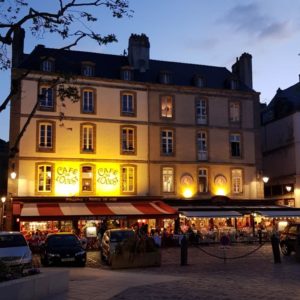
Nowadays, the town is full of boutiques, cafes and restaurants with outdoor terraces, art galleries, interesting little shops and a number of hotels, plus the usual professional offices and services.
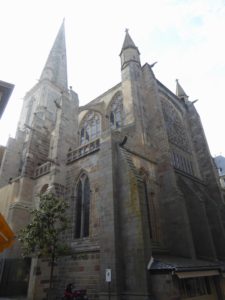
The restored Cathedrale de St Vincent located Intra-Muros, dates from the 12th to the 18th centuries. Although it has undergone several renovations and repairs over the centuries, particularly after it sustained bombing during WW2, it is still largely a Romanesque building with some beautiful stained glass windows, and tombs of local heroes including the explorer Jacques Cartier, who explored the St Lawrence River in 1534 and allowed France to lay claim to what would become Canada.
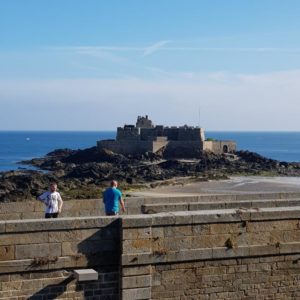
A walk along the 2 kms of magnificent ramparts offers spectacular views of the town, the harbour and islands, and historic forts out to sea. It’s possible to walk out to the pretty islands of Grand Be and Petit Be at low tide. Fort National is also reachable on foot from St Malo’s longest beach, the Grand Plage. Locals advise taking note of the timing of the tides as the differences between high tide and low tide are not only dramatic, but very swift.
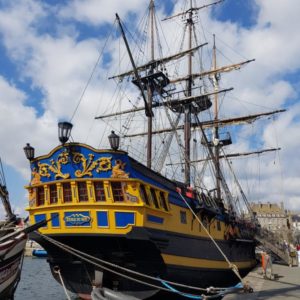
A walk out through the main gate towards the port will take you past a number of historic vessels, some of which offer sailing excursions of varying duration. Others can be visited to admire the historically accurate rigging, cannons still in place, while imagining what life was like in the age of the buccaneers.
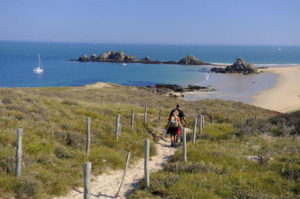
If you enjoy serious walking, the GR 34 coastal path, which runs over 1,800 kms along the entire Brittany coast, extends right around to Mont Saint-Michel. It is said to be one of the most spectacular walks in France. Created by the customs service in 1791 during the French Revolution to track down smugglers, and known as the Sentier des Douaniers, (Customs Path), it fell into disuse for over a century, but was restored by keen hikers in the 1960s. Since 1976 a law established a 3 metre wide right-of-way for pedestrians along the entire coastline.
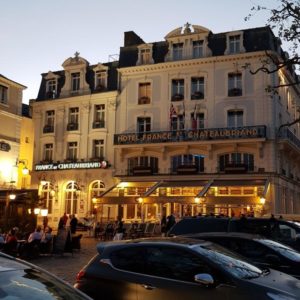
We stayed in a super hotel inside the walls, the Hotel de France et Chateaubriand, an historic building once the ancestral home of the Vicomte de Chateaubriand, the writer, politician, diplomat and historian, who was born there in 1768. Built within metres of the ramparts, it was quite a challenge to not only drive into the walled town, but find the hotel in the narrow, twisting roads with very little signage! Even the local policeman directing traffic found it difficult to explain how to do it. However, the wonderful location and stunning views from the upper floors, plus an excellent restaurant, made it all worthwhile. Certainly Intra-Muros is the only place to stay in St Malo, as the new town, back across the causeway on the mainland is less than inspiring.
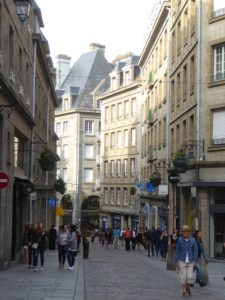
St Malo is a beautiful town to spend time within the dramatic old walls enjoying its history, gorgeous views, interesting walks and great food, including the freshest seafood, local cider and delicious patisserie.
The Brittany ferries depart from St Malo, and there’s also a rental car depot which makes it a very convenient departure point for the Channel Islands.
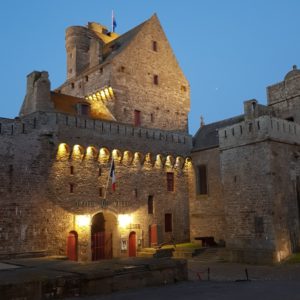

Erich Saikovski
Looks truly beautiful hope to see it one day many thanks for all your great locations was sheer pleasure to see all the wonderful places one should visit cheers Erich
Cheryl Brooks
Hi Erich,
Glad you enjoyed reading about it. St Malo is a fascinating town with such a rich history–it’s certainly worth a day or two. Cheers, Cheryl
MONT SAINT-MICHEL, NORMANDY’S JEWEL IN THE CROWN – Paris Plus Plus
[…] Rennes is about a 1.5 hr. train ride direct from Paris Gare Montparnasse, and it’s an ideal town from which to rent a car to explore the region. If you don’t wish to rent a car, there are buses from Rennes to Mont Saint-Michel that take about an hour, and drop you at the tourist office near the carpark. Another option is to stay at Saint-Malo (also possible by train from Paris Gare Montparnasse, but requires a change at Rennes), from where you can take a combo of train then bus to Mont Saint-Michel, and is a fabulous destination in its own right—see my Blog of 03 Sept. 2018 to learn more: https://parisplusplus.com/beyond-paris/st-malo-gateway-to-brittany […]